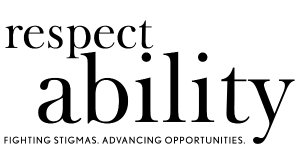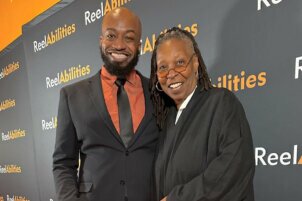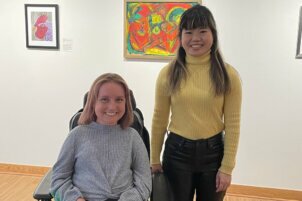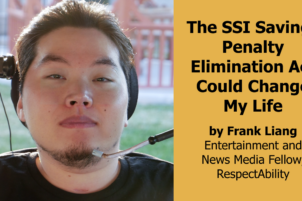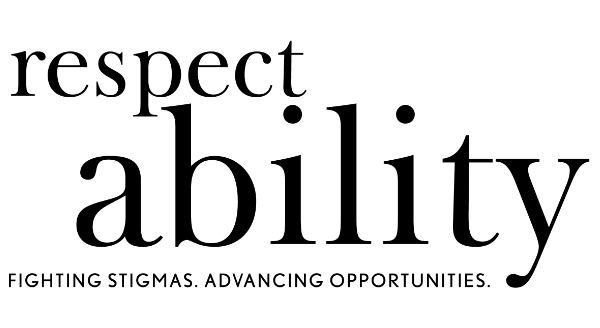Charleston, WV, November 24 – This week, the West Virginia Workforce Development Board met to discuss the status of workforce practices in the Mountain State. In response to this meeting, RespectAbility, a national, nonpartisan nonprofit organization, submitted testimony on how to implement best practices, advocate for greater inclusion and improve the standing of people with disabilities in the workforce.
“When it was passed with broad, bipartisan support in 2014, the Workforce Innovation and Opportunity Act (WIOA) invested unprecedented resources into efforts to get people with barriers to employment into the labor force,” said Olegario “Ollie” Cantos VII, RespectAbility’s Chairman. “Now, after the pandemic that has reshaped our economy, it is time to devote significant attention to supporting the economic advancement of students, job-seekers, and entrepreneurs with disabilities.”
There are more than 178,000 working age (18-64) West Virginians living with some form of disability. Before the pandemic, 31.1 percent of the working age population of people with disabilities were employed. It is critical that West Virginia’s Workforce Development Board listen to the individuals with disabilities and advocates impacted by these unemployment rates. In order to make the workforce more inclusive, and to find practical ways to make the workforce more accessible for the entire population, RespectAbility collects, summarizes, and publicizes ideas on key workforce solutions. To learn more about RespectAbility’s advocacy work, please visit our Policy website.
RespectAbility’s full testimony is presented online and below:
To: Members and Staff, West Virginia Workforce Development Board
From: Staff, Board, and Fellows of RespectAbility
Re: Public Comments for November 24, 2021 Meeting
Dear Chair Sorrenti,
Thank you very much for the opportunity to offer our comments for West Virginia Workforce Development Board’s November 24, 2021 meeting. RespectAbility is a nonpartisan, nonprofit disability inclusion organization dedicated to fighting stigmas and advancing opportunities for millions of Americans with disabilities.
One-in-five Americans have a disability according to the U.S. Census Bureau. People with disabilities are America’s largest minority group and the only one that, due to accident, aging or illness, anyone can join at any time. Indeed, in West Virginia itself, there are 349,732 residents living with some form of disability and they make up fully 19.8 percent of West Virginia’s population.
These facts have wide-ranging implications for West Virginia’s overall workforce development planning and the unique challenges facing West Virginians with disabilities need to be recognized across the entire scope of your board’s work.
In these comments, RespectAbility team of subject matter experts and advocates with disabilities have collected our critical ideas, policy proposals, and key data to inform your board’s decision-making process. While we are a national organization, we are eager to collaborate with you and your team.
Our ideas and recommendations are as follows:
Focus on Closing the Gap in Labor Force Participation Rates between West Virginians with and without disabilities
As West Virginia grapples with new coronavirus variants and strategies to get more West Virginians back to work, it is worth recognizing the good and bad news facing workers with disabilities. The bad news is that even before COVID-19, working-age West Virginians with disabilities lagged behind their non-disabled peers in job opportunities. Prior to the pandemic, West Virginia’s employment rate for working-age people with disabilities was 31.1 percent, compared to 72.6 percent of people without disabilities. This disparity is even more striking when broken down by race. 31.1 percent of working-age people with disabilities who are white have jobs compared to only 30.2 percent of those who are Black, 27.6 percent of those who are Hispanic/LatinX and 57.9 percent of those who are AAPI. Compounding the problem, the pandemic has ravaged the disability community and more than 1 million workers with disabilities have lost their jobs nationwide.
Far too many decision-makers only pay attention to the overall unemployment rate without looking deeper. People with disabilities want to work, can work, and are striving to work harder than ever before. As such, RespectAbility has consistently advocated that decision-makers in the workforce development system at the national and local levels use the Labor Force Participation Rate as a key metric for measuring efforts to get more people with barriers to employment into the workforce.
In the autumn of 2021, the labor force participation rate for working-age people with disabilities is now 2 full percentage points higher than it was before COVID-19. This means that people with disabilities are engaging with the labor force in higher numbers than before the pandemic. According to the Bureau of Labor Statistics, people with disabilities now have a 35.6 percent labor force participation rate, compared to 76.1 percent of those without disabilities.
As such, decision making entities like your workforce board need to adopt a focused strategy for getting more people with disabilities into the workforce and the right metrics to hold themselves accountable for that success.
Look at Strategies to Close the Gap in High School Graduation Rates
The link between educational attainment and ultimate employment success is clear. As such, gaps in educational attainment, especially around high school completion rates, have serious long-term impacts on the labor force, the talent pipeline, and the economic wellbeing of West Virginia. As such, it is worth paying attention to certain key, disaggregated data points that show where the gaps are in educational attainment for young West Virginians, especially BIPOC students with disabilities.
In West Virginia’s K-12 public schools, there are over 42,136 students with disabilities. The changing demographics of the nation are reflected in the student population, with fully 10 percent of them being Black, Indigenous, or People of Color (BIPOC) individuals with disabilities. 11.4 percent of students with disabilities nationwide, or almost 720,000 students, identify as English-language learners. Critically, among the class of 2019, the high school graduation rate for students with disabilities was only 79 percent, compared to 91 percent of students without disabilities.
This means that many students with disabilities are leaving West Virginia’s school system with uncertain prospects for finding a place in the workforce. Numerous studies have demonstrated that college graduates will earn far more than college students who dropped out. By far, those earning the least are students without a high school diploma. A lack of a high school diploma is the negative ‘gift’ that keeps on hurting. As such, legislators have a moral imperative to invest in and expand services that will support the educational and employment success of more students with disabilities.
Expand on the Use of Online, Cohort-Based Apprenticeships for Workers in the Knowledge Economy and the Nonprofit Sector
The pandemic has made remote work an accepted reality for thousands of workers. This has been a “silver lining” of expanding and normalizing a common reasonable accommodation request long championed by workers with disabilities. Microsoft has dramatically expanded their accessibility features, including built-in speech to text technology which makes it possible for people with even the most limited mobility to use computers. This has opened an unprecedented window for people with disabilities to contribute to the success of nonprofits, communities and beyond. Remote work also has great promise at expanding apprenticeship programs into more diverse sectors of the West Virginia economy, especially the knowledge economy. RespectAbility has retooled our own National Leadership Program from being a cohort-based internship program located in Washington D.C., into an all-virtual, work-from-anywhere skills-based training program. Such approaches have major implications for efforts to train workers for good-paying jobs in the knowledge economy and the nonprofit sector.
A 13th year to close the educational gap left by the pandemic
The pandemic has adversely impacted students with disabilities in West Virginia. The loss of instructional time has made valuable employment transition skills nonexistent due to the pandemic and shortened school year. High school seniors, especially high school seniors with disabilities have run out of time to complete their high school diploma and take advantage of school-to-work transitional services.
Many high school senior students with disabilities have missed out on high school completion with the goal to earn a diploma and vital year to gain skills needed for integration into the workforce. There is no make-up year unless one is created. An additional year of schooling or “13th year” is crucial to allow graduating students to succeed and enter the workforce. The pandemic should not deny transition services to this year’s seniors. As education is a civil right in the United States. If students fail to earn their high school diploma, then they will be denied the opportunity to go to college. Numerous studies have demonstrated graduates of college will earn far more than college students who drop out. By far those earning the least our students without a high school diploma. Many other leaders in New Jersey, Pennsylvania, Illinois, and Massachusetts, have introduced or passed bills that would allow students’ academic extensions. It is imperative that students with disabilities in West Virginia are given a thirteenth year of schooling to close the gap the pandemic has created and allow them to take advantage of the additional time to complete their high school diploma and take advantage of transitional services to employment for their lifelong success.
Look at Expanding Access to Entrepreneurship as a Workforce Solution
In the pre-pandemic era, job seekers with disabilities were already turning to self-employment in far higher numbers than their non-disabled peers. As of the 2019 American Community Survey, approximately 700,000 workers with disabilities were self-employed, enjoying the flexibility and opportunities that entrepreneurship provides. For many, they did so because being your own boss and owning a small business served as an end-run around the barriers to employment that hold back far too many people with disabilities. In looking at the issue of self-employment and promoting entrepreneurship among people with disabilities, special attention should be directed to the equity issues of access to capital and systemic racism. Several disability organizations have been advocating for the inclusion of people with disabilities as a specific category under the rules of the Community Reinvestment Act (CRA) and to advance racial diversity in the entrepreneurship space. Now is the appropriate time to begin digging deep into that work as an equitable workforce strategy. We further note that as West Virginia expands this program, it should be done with careful consumer input, and use criteria to measure success and eligibility that is consistent with the real factors necessary to ensure the success of a small business.
Focus on Encouraging Disability Owned Businesses by Utilizing Best Practices from Others
There is an opportunity for a West Virginia model which prioritizes contract and purchase services for certified disability-owned businesses as a disability employment model. To measure success, it is also important to ensure that WIOA employer engagement measures the type of employment relevant to small business activities, including disability-owned businesses, in addition to large corporate employers. These are topics that merit deeper attention as West Virginia looks for innovative solutions to the challenge of building back better. Iowa VR has embraced entrepreneurship and self-employment as one of the key virtual services provided to the people with disabilities that they serve.
Iowa’s Vocational Rehabilitation agency has embraced the current crisis by adopting a range of new virtual strategies, approaches, and procedures for providing high-quality workforce service even amid a virtual pandemic. Some of those innovative approaches have major implications for the future of VR. Iowa quickly invested in the technological infrastructure to provide virtual services statewide, adopted a cohort-based model for fostering social connections among VR clients on Zoom and tested other emerging practices throughout 2020. West Virginia could learn from the innovations and ideas tested by Iowa and Iowans with disabilities.
Building the Caring Economy through Proven Models of Disability Employment
In looking for ways to both provide quality care to older Americans and to get more workers with disabilities into the labor force, policymakers should dramatically expand the Project SEARCH model. In the Mountain State, there is a SEARCH site at WVU Medicine – Ruby Memorial Hospital, in Morgantown. While this site is doing fine work, it can only serve between 10 and 12 students with disabilities per year. To meet the true scope of caregiving needs, many more SEARCH sites are needed in every corner of West Virginia.
We recognize that there are many high-quality programs in West Virginia, but we know that Project SEARCH is an exemplary and transformational school-to-work transition program for adults with intellectual and developmental disabilities that prepares them for good paying careers in hospitals, elder-care, and the caring economy. The SEARCH model is a win-win-win for the host employer, the employee with disabilities, and the many older Americans helped by Project SEARCH trained workers. The model has already been replicated in 47 states, with dozens of satisfied employers, and hundreds of workers with disabilities earning minimum wage or more. This model is perfect for expansion throughout West Virginia and should be available to all students with disabilities. It can help fulfill West Virginia’s need for career readiness through a successful model in tandem with existing work readiness programs for adults with disabilities. The need is great, and every successful model should be grown and replicated.
Improving Pre-ETS and continuing to offer virtual services
Despite the eagerness of so many to jump directly to the post-COVID world and a return to normal, providers working with youth with and without disabilities need to be prepared to continue to provide virtual services now and in the future. As such, it is worth highlight the adaptability and innovative work done in other states around the provision of virtual pre-ETS services. We have highlighted the work of Iowa Voc Rehab previously in these comments, but it is also worth spotlighting the work done in Tennessee. Last year, the Tennessee Department of Human Services published a comprehensive guide about virtual Pre-ETS and best practices proven during the worst months of the pandemic. Youth with disabilities, especially those between the ages of 14 to 21, need to be prepared for the digital workforce and virtual training is a necessary first step. Continuing to provide virtual services presents a direct opportunity to tackle the digital divide by directly providing access to technology and assistive technology for youth with disabilities from marginalized communities.
Pre-Employment Transition Services (Pre-ETS) are one of the most important elements of the Workforce Innovation and Opportunity Act (WIOA) of 2014. Representing a group of collective services designed to help youth with disabilities prepare for life after compulsory education, pre-ETS are a crucial policy innovation to connect millions of youths with disabilities to services and support while they are still in school and set them up for a lifetime of success. Part of that innovative approach is the inclusion of and collaboration with local educational agencies to order to be connect students with disabilities to skill development programs and other training needs.
The pandemic and the switch to virtual learning has significantly impacted the provision of pre-ETS services. An additional barrier was the serious delay in federal guidance and technical assistance to support pre-ETS work throughout 2020.
It is important to adapt Pre ETS to meet the needs of students that are virtually learning, even as people are getting vaccinated. This is done by creating clear guidelines for presenting pre-ETS in a virtual environment and planning to continue to do so in the near future. This includes scheduling time for virtual instruction, making sure that content adheres to the 5 components of pre-ETS, keeping up lines of communication and adapting documents to virtually monitor student progress, while allowing progress information to be shared among IEP teams on the educational side.
Leveraging Federal Contractors and Section 503 to Drive Employment Opportunities for Workers with Disabilities
In looking at new strategies, alternative pathways, and economic sectors to support the aspirations of jobseekers with disabilities, it is worth recognizing the unique place occupied by companies doing business with the federal government. If your board members are not familiar, it is worth your attention to learn more about Section 503 of the Rehabilitation Act of 1973, as amended. Section 503 specifically contains legislative language about affirmation action, non-discrimination against individuals with disabilities, and subsequent regulations have been used to encourage contractors to hire individuals with disabilities through affirmative action. Beginning in 2016, the Office of Federal Contracting Compliance Program (OFCCP) set a new utilization goal for contractors to have up to 7 percent of their workforce, in all job categories, be individuals with disabilities. The 7 percent goal was very much intended as a gauging goal and a tool to encourage great diversity efforts.
In seeking to meet the challenge of Section 503 and the 7 percent goal, contractors have adopted a wide range of strategies including encouraging disability self-disclosure among employees and staff. Contractors are prohibited from asking the nature of a disability however staff may self-disclose through demographic documents and data collection. There is comprehensive information available to support contractors through great national organizations like the National Organization on Disability (NOD) and Disability: IN.
There are major, multi-billion-dollar contractors doing business with the federal government across West Virginia. Examples of major federal contractors in the Mountain State include:
- ManTech Advanced Systems International, Inc. $60.12 million (0.4% of total contracts)
- Leidos, Inc. $54.32 million (0.3% of total contracts)
- HMS Technologies, Inc. $52.33 million (0.3% of total contracts)
- Keylogic Systems, Inc. $42.95 million (0.3% of total contracts)
- Us&S – E2 I, LLC $37.96 million (0.2% of total contracts)
These companies, and other contractors in other parts of West Virginia, are natural partners in this work. For more detailed information, please visit our website here: https://www.respectability.org/lajobs/federal-contractors/
Ensuring Family Engagement is an Element of Workforce Development Planning to Support Transition-Aged Youth with Disabilities
A critical, if often neglected, element of transition planning and workforce development is the importance of family engagement. Families are crucial stakeholders and valuable partners in the effort to get more youth with disabilities into the workforce. The National Technical Assistance Center on Transition (NTACT) has been tracking key innovations and best practices around family engagement and transition services even before the pandemic got started. Several of NTACT’s resources are directly intended to support providers as they work to successfully engage families, develop plans to inform clients about the full range of services available under the workforce development system, and strategies for success. More details are available online here: https://transitionta.org/topics/family-engagement/.
Likewise, given the rich cultural, linguistic, and ethnic diversity of West Virginia’s communities, resources in languages other than English are absolutely essential. Several disability organizations in communities across the country have developed Spanish language resources to support parents, family engagement and directly benefit youth with disabilities. More work needs to be done in this space, but as a starting point, we are delighted to several Spanish language documents developed by RespectAbility and our partner organizations: https://worldenabled.org/our-projects/respect-ability-spanish-disability-guide-for-parents/
Adopting a “No-Wrong-Door” Approach to Connect Jobseekers with and Without Disabilities to Workforce Services
In looking for ways to transform West Virginia’s workforce development system, to advance opportunities for jobseekers with disabilities, and to improve participant engagement, it is worth considering valuable lessons learned by other service systems. Specifically, it is worth looking in close detail at the successes achieved by the No Wrong Door (NWD) System initiative previously conducted by the Administration for Community Living (ACL). While ACL’s work on creating a “No-Wrong-Door” system was specifically done around long-term services and support (LTSS) for older Americans and people with disabilities, this approach can significantly streamline bureaucratic processes, improve services, and support participant success. While there are barriers created by the legislative framework that funds and supports workforce services, pushing for greater collaboration and looking closely at user experience at the local level suggests that making the workforce system more person-centered and streamlined will reap critical benefits. More details and key lessons learned are well document by both Federal agencies and in other municipalities. As such, we encourage your team to learn more here:
- https://acl.gov/programs/connecting-people-services/aging-and-disability-resource-centers-programno-wrong-door
- https://dds.dc.gov/page/full-no-wrong-door-mission-vision
- https://dds.dc.gov/page/no-wrong-door
Work with Subject Matter Experts and Learn from Past Implementation of Best Practices
One of the fundamental ideas of WIOA was to improve workforce services through new partnerships and collaborations to tear down siloes separating programs. This idea is particularly relevant when talking about disability employment issues and best practices in workforce systems. There are numerous national, state and local organizations with deep knowledge about improving services to jobseekers with and without disabilities. RespectAbility is such organization, but there are many others who are eager to help improve outcomes. Likewise, there is value in reflecting on documented best practices and proven models of success. On that front, the work of the National Governors Association (NGA) Better Bottom Line initiative and the Council of Montana Governments (CSG): Work Matters A Framework for States on Workforce Development for People with Disabilities come to mind. Likewise, the 2018 Accenture study and the 2020 report from Mercer and Global Disability Inclusion on employees with disabilities have critical lessons to teach private sector employers seeking to onboard talented workers with disabilities.
As an organization that advocates on behalf of job seekers with disabilities and their families, we believe that collecting the best ideas, emerging practices and innovative policies is critical to ensuring that Americans with and without disabilities have equal access to good jobs. Without such ideas communities and policymakers cannot direct appropriate resources to the places that need them most, particularly in the wake of the COVID-19 pandemic. If you have any questions or would like to discuss these matters further, our team stands ready to help, however we can. Thank you.
These comments were prepared thanks to the hard work and close attention of RespectAbility’s Fellows, Staff, and Board Members. Special credit is due to current Fellows Shereen Ali, Roy Payan, and Tammie Stevens who have been active contributors to our organization’s work on policy advocacy, civic engagement and advancing disability inclusion. They represent future leaders who will have a substantial impact on the opportunities and aspirations of millions of Americans with disabilities.
